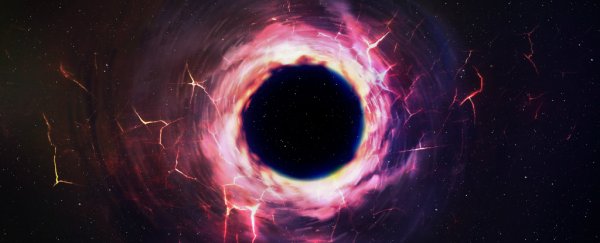One day, the Universe is going to die out - that's something scientists can agree on. But exactly how and when that will happen is a more of a grey area, and it's not something we've really had to worry about, with current predictions putting any such event tens of billions of years in the future - long after our Sun burns out.
But what if our current predictions are wrong? A team of researchers has investigated an alternate hypothesis and, given the worst case scenario, they found that the soonest the Universe could come to an untimely end would be 2.8 billion years from now. "We're safe," lead researcher Diego Sáez-Gómez from the University of Lisbon in Portugal told Jacob Aron from New Scientist.
The scenario that Sáez-Gómez was investigating is known as the 'big rip', and it's quickly becoming a leading hypothesis for how the Universe could end.
For those who haven't read too much about the sad death of our Universe, there are a few ways it could happen, but the leading scenario goes something like this: the Universe continues to expand at an increasing rate until eventually the stars die out, everything drifts apart, and the Universe gets so cold that it suffers what's known as a 'heat death'. There's also the idea of the 'big crunch', where the expansion the Universe eventually collapses in on itself.
But since the discovery of dark energy, physicists have been toying with another alternative. "Until now we thought the Universe would either re-collapse to a big crunch or expand forever to a state of infinite dilution," end-of-the-Universe expert Robert Caldwell from Dartmouth College, told New Scientist back in 2003. "Now we've come up with a third possibility - the big rip."
The big rip is based on the idea that the Universe's expansion is getting faster all the time, and that acceleration is being driven by dark energy. So if the total amount of dark energy in the Universe is increasing, as some researchers have proposed, then that expansion could continue to speed up until the very fabric of the Universe is torn apart.
It'd be an unfortunate way to go, and previous predictions had put that event at around 22 billion years in the future - way too far away for us to be concerned about. But we're continually learning more about dark energy, and how it controls the expansion of the Universe, so Sáez-Gómez decided to model some other scenarios based on the latest data.
These models allowed his team to come up with a timeline for both the earliest and latest the big rip could occur. "We show that quite generally, the lower bound for the singularity time can not be smaller than about 1.2 times the age of the Universe, what roughly speaking means approximately 2.8 [billion years] from the present time," they write at pre-print website, arXiv.org.
That's good news, but even better is the fact that "the upper bound goes to infinity", Sáez-Gómez explains. That would mean that the big rip never happens, and the heat death of the Universe occurs instead.
To be clear, it's pretty unlikely the Universe will actually be done in 2.8 billion years, especially seeing as our Sun is expected to be around for at least another 5 billion years. Caldwell called the lower bound "very conservative". But the process of coming up with these potential timelines is incredibly useful for scientists.
"Scenarios like the big rip result from a lack of understanding of physics in particular our inability to marry quantum mechanics and general relativity, the theory of gravity," writes Aron. "Exploring the possibilities could show us a way forward."
